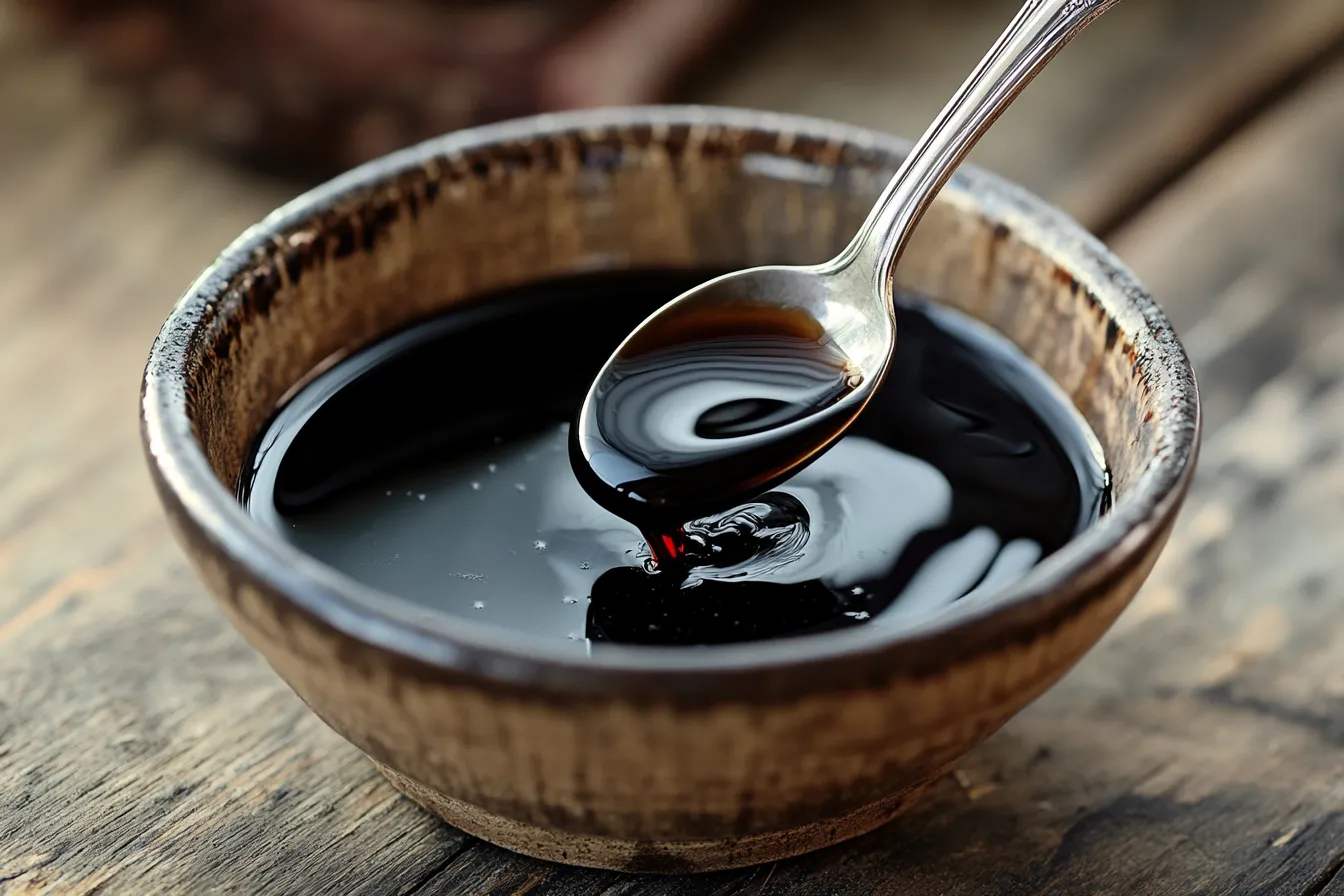Introduction
If you’ve ever strolled through a fancy grocery store or dipped crusty bread into a glossy, dark vinegar, you’ve probably encountered balsamic vinegar. But what’s with the buzz around “balsamic balsamic balsamic” these days? This catchy phrase is trending because more home cooks and chefs alike are rediscovering the power of balsamic: its deep, complex sweetness, velvety acidity, and its incredible versatility. From simple salad dressings to gourmet reductions, balsamic elevates food in a way no other vinegar can.
In this in-depth guide, we’ll explore what makes balsamic so special, how you can use it to transform your meals, and even how to craft a mouthwatering balsamic reduction at home. Whether you’re a food enthusiast or just getting curious about this Italian classic, you’ll find practical, easy-to-digest information to become a true balsamic aficionado..Awesome Sauce
What is Balsamic Balsamic Balsamic?
So what does “balsamic balsamic balsamic” really mean? It might sound silly, but it reflects a growing appreciation for balsamic’s unique taste and its endless applications in modern kitchens. Balsamic vinegar is a dark, intensely flavored vinegar originating from Italy, made primarily from grape must (freshly crushed grape juice with all the skins, seeds, and stems).
The triple “balsamic” phrase emphasizes its richness, versatility, and heritage. You’ll see chefs repeating “balsamic balsamic balsamic” on social media because it celebrates the magic of this ingredient:
- Balsamic as a flavor booster
- Balsamic as a healthy addition
- Balsamic as a gourmet highlight
So yes, this trend is more than hype — it’s a movement celebrating the full-bodied beauty of balsamic vinegar.
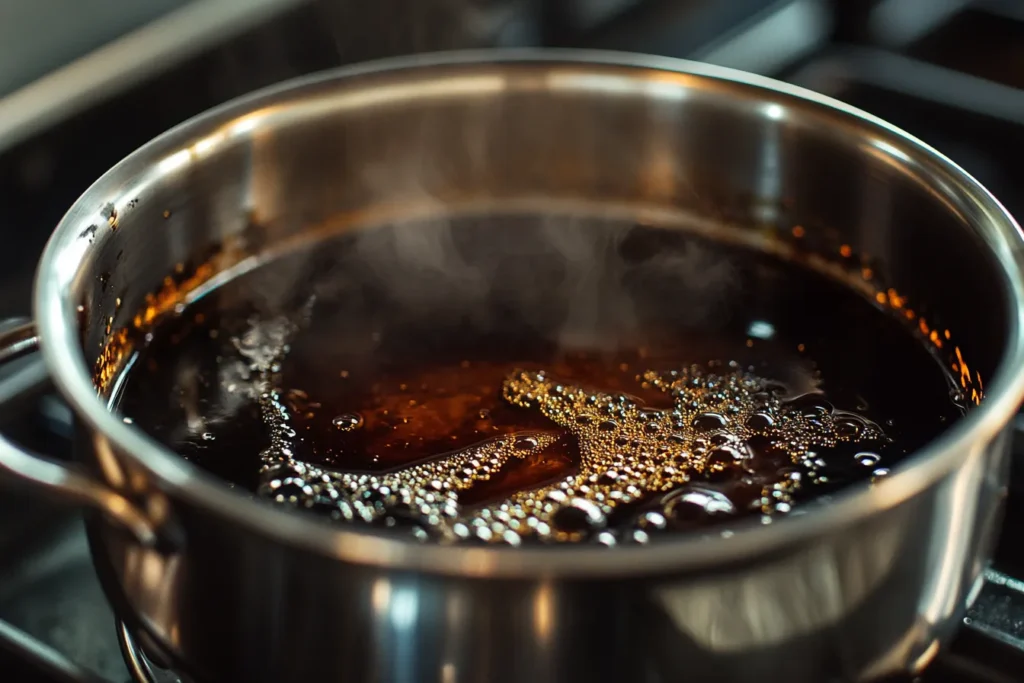
The History of Balsamic Vinegar
Balsamic vinegar is one of Italy’s proudest food treasures. It dates back over 1,000 years, with its origins in Modena and Reggio Emilia, where aristocratic families first produced small batches as a luxurious condiment. Traditional balsamic vinegar (Aceto Balsamico Tradizionale) is aged for at least 12 years in a series of wooden barrels, developing the signature syrupy consistency and complex layers of flavor.
Over time, balsamic has evolved beyond the tiny, prized bottles reserved for kings and nobles. Today, you’ll find everything from affordable, mass-produced balsamic vinegar to authentic traditional varieties that can cost hundreds of dollars per bottle. Still, no matter the price point, true balsamic lovers appreciate its centuries-old tradition of craftsmanship.
Balsamic in Modern Kitchens
Nowadays, balsamic vinegar is a pantry staple around the world. Chefs and home cooks alike use it for:
- brightening salad dressings
- finishing grilled meats
- deglazing pans
- drizzling over roasted vegetables
- or even adding a surprising sweet touch to desserts like strawberries or vanilla ice cream.
With the surge in popularity of “balsamic balsamic balsamic,” expect even more creative uses to emerge, thanks to its balance of sweetness and tang.
Types of Balsamic Vinegar
Balsamic vinegar is far from a one-size-fits-all product. The market offers many options, each with distinct characteristics. Let’s break them down so you can choose the right balsamic for your culinary needs.
Traditional Balsamic Vinegar
Traditional balsamic vinegar, labeled as Aceto Balsamico Tradizionale di Modena or di Reggio Emilia, is the real deal. Crafted from cooked grape must, it is aged in a battery of wooden barrels for at least 12 years, sometimes even 25 years or longer. These barrels, made from different woods like cherry, oak, or juniper, infuse subtle flavors as the vinegar slowly matures..Balsamic Vinaigrette Recipe
Traditional balsamic is rich, syrupy, and complex — perfect for drizzling over Parmesan, strawberries, or even steak. It’s expensive, but a little goes a long way. Look for the DOP seal to ensure authenticity.
Commercial Balsamic Vinegar
Commercial balsamic is the kind most of us know from grocery store shelves. It usually combines wine vinegar with grape must and sometimes caramel coloring. Commercial versions are quicker to produce and far more affordable than traditional balsamic, making them great for everyday salad dressings, marinades, and pan sauces.
While they lack the nuanced flavor of the traditional variety, commercial balsamics still deliver the tangy-sweet punch people love. When shopping, look for brands with a higher percentage of grape must for better quality.
Flavored Balsamic Vinegar
Foodies have gotten creative with balsamic in recent years, infusing it with flavors like fig, pomegranate, espresso, or even chocolate. These flavored balsamic vinegars can add a gourmet twist to dishes and are fun to experiment with. Just be sure to check the ingredient list — some cheaper products use artificial flavors rather than natural infusions.
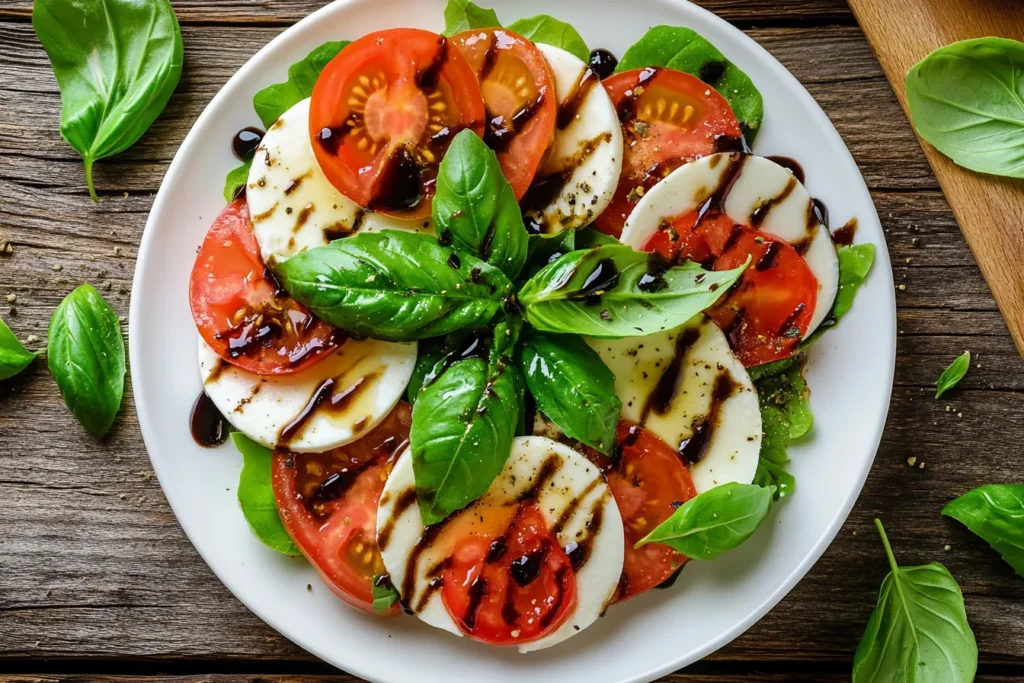
How Balsamic Vinegar is Made
Making true balsamic vinegar is an art. The process begins with freshly pressed grape juice (grape must), which is slowly cooked down to concentrate its sweetness. This reduction is then poured into wooden barrels, where a delicate fermentation begins.
Over time, the vinegar is transferred through progressively smaller barrels, picking up flavor from different types of wood and thickening naturally through evaporation. Skilled producers test and taste the vinegar as it matures, sometimes blending barrels for the perfect profile.
Commercial balsamic skips much of this aging process, using wine vinegar mixed with concentrated grape must and coloring. While it doesn’t reach the same heights as traditional balsamic, it offers a similar sweet-tart profile in a fraction of the time.
Why Balsamic is So Special
The true magic of balsamic lies in the balance of sweetness, acidity, and complexity. Unlike other vinegars that are purely sour, balsamic dances on the tongue with rich caramel notes, fruity undertones, and subtle wood-aged flavors. That’s why it works in savory and sweet recipes alike — a rare feat in the vinegar world.
Health Benefits of Balsamic Vinegar
Beyond its stunning flavor, balsamic vinegar packs impressive health benefits. According to Healthline’s balsamic vinegar nutrition guide, balsamic contains antioxidants that can help combat cell damage from free radicals. Its acetic acid content may aid digestion, regulate blood sugar, and support weight management.
Some studies even suggest balsamic vinegar has antimicrobial properties, making it a smart, natural addition to your diet. However, like anything flavorful and rich, moderation is key — a drizzle or two is plenty.
A Low-Calorie Flavor Bomb
If you’re watching your calories, balsamic is a great ally. A tablespoon typically contains just 14 calories, but offers enormous flavor impact. Instead of heavy cream-based sauces, consider balsamic to add depth without the guilt.
Gut-Friendly Potential
Traditional balsamic vinegars, thanks to their fermentation process, may even have probiotic qualities that support a healthy gut microbiome. Though more research is needed, it’s another reason balsamic deserves its reputation as a healthy pantry staple.
How to Use Balsamic in Cooking
Balsamic vinegar’s magic shines brightest in the kitchen, where it elevates ordinary dishes to gourmet experiences. The phrase “balsamic balsamic balsamic” sums up its endless culinary possibilities. Let’s break down its most popular uses so you can master this remarkable ingredient.
Marinades
Balsamic is a natural for marinades. Its acidity tenderizes proteins, while its subtle sweetness complements meats, fish, and even tofu. Blend balsamic vinegar with olive oil, garlic, rosemary, and a pinch of salt to create a simple but powerful marinade for chicken breasts or beef steaks. Let it soak for at least 30 minutes before cooking, and you’ll notice how the balsamic penetrates the meat, creating a caramelized crust on the grill.
Salad Dressings
No salad dressing is quite as iconic as balsamic vinaigrette. Combining balsamic vinegar with extra virgin olive oil, Dijon mustard, honey, and fresh herbs makes a balanced, tangy dressing that works beautifully on green salads, grain bowls, or even pasta salads. The bold, slightly sweet profile of balsamic ensures your dressing stands out.
Sauces
Balsamic adds depth to all kinds of sauces. Stir a splash into tomato-based pasta sauce for a surprising twist, or deglaze a pan with balsamic after searing pork chops for an instant, luxurious pan sauce. You can even mix it with reduced beef or chicken stock for a sophisticated, restaurant-worthy drizzle.
Reductions and Glazes
One of the most beloved balsamic kitchen hacks is a reduction. By simmering balsamic vinegar until it thickens into a syrupy glaze, you create a powerful sweet-savory condiment. This reduced balsamic, also called balsamic glaze, is perfect on roasted vegetables, grilled salmon, or even vanilla ice cream.
If you’d like a step-by-step guide, check out Serious Eats on how to make balsamic glaze for more inspiration.
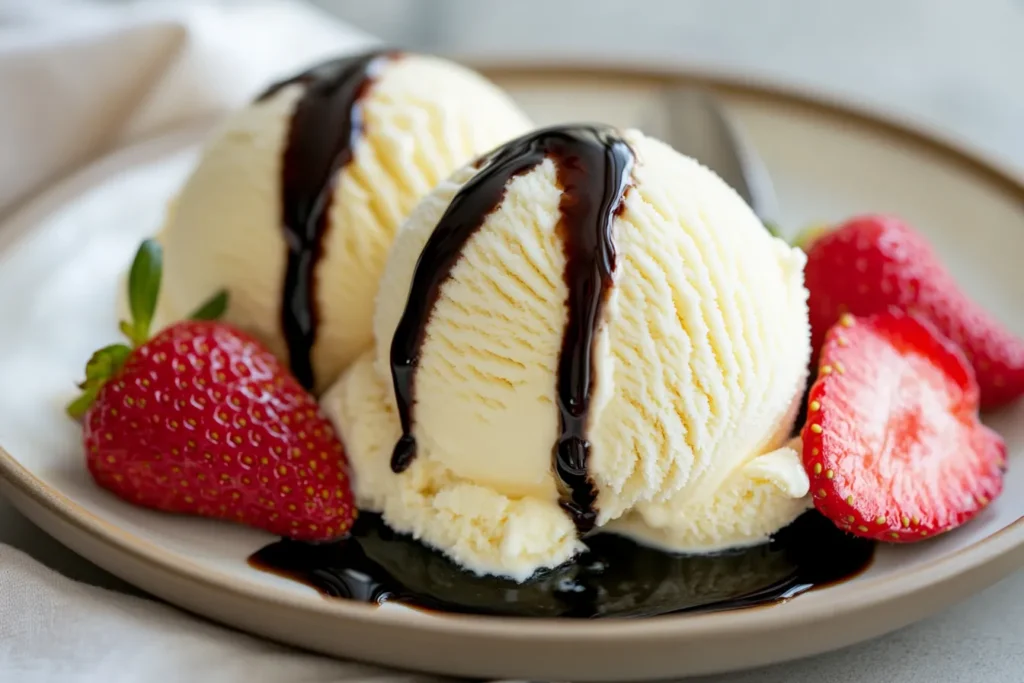
How to Make Balsamic Reduction at Home
Making balsamic reduction at home is incredibly simple and far cheaper than buying ready-made glazes. Here’s a basic approach to try in your own kitchen:
Simple Balsamic Reduction Recipe
- Pour 1 cup of good-quality balsamic vinegar into a small saucepan.
- Set over medium heat and bring to a gentle simmer.
- Reduce heat to low and continue to simmer, stirring occasionally, until the liquid reduces by half. This usually takes 15–20 minutes.
- Once thickened to a syrup-like consistency, remove from heat.
- Cool completely before transferring to a jar or squeeze bottle.
Flavor Variations
- Add a teaspoon of honey for extra sweetness
- Infuse with fresh rosemary or thyme
- Stir in a pinch of cracked black pepper
- Try a splash of orange juice for a citrus twist
Storage Tips
Homemade balsamic reduction keeps for up to 3 weeks in a sealed container in the fridge. Just be sure to label it so you remember exactly what’s in that mysterious dark jar!
Best Balsamic Pairings
Let’s talk about what balsamic vinegar pairs with best. This ingredient is remarkably flexible, so don’t be afraid to experiment. Here are some winning combos:
- Strawberries + balsamic glaze = classic dessert
- Fresh mozzarella + tomatoes + balsamic = perfect Caprese salad
- Grilled peaches + balsamic drizzle = summer magic
- Roasted Brussels sprouts + balsamic reduction = sweet, nutty harmony
- Parmesan cheese + a few drops of traditional balsamic = decadent umami
Sweet Pairings
Balsamic is not just for savory dishes. Try it over vanilla ice cream, poached pears, or even chocolate desserts for a surprising flavor explosion. Its acidity balances the sweetness perfectly, creating a truly gourmet dessert.
Savory Pairings
For savory plates, balsamic belongs on roasted chicken, pan-seared scallops, and grilled portobello mushrooms. Its gentle sweetness cuts through richness, making it a brilliant finishing touch.
Common Mistakes to Avoid with Balsamic
Even though balsamic is a forgiving ingredient, there are a few classic mistakes that can trip you up in the kitchen. Let’s break down what to watch out for so you can keep enjoying balsamic balsamic balsamic in its best form.
Overheating Balsamic Vinegar
One of the biggest mistakes is cooking balsamic vinegar over high heat for too long. Because of its natural sugars, balsamic can scorch easily, turning bitter instead of sweet. Always simmer gently if you’re making a reduction, and avoid boiling it rapidly.
Using Too Much at Once
Balsamic has a powerful, concentrated flavor. A drizzle is usually enough to bring brightness and richness to a dish. Pouring on too much can overwhelm delicate ingredients, leaving your dish unbalanced. Remember: a little goes a long way!
Confusing Types of Balsamic
It’s easy to grab the wrong bottle. Traditional balsamic is incredibly precious and best saved for finishing dishes or enjoying plain on a cheese board. On the other hand, commercial balsamic works perfectly for salad dressings or marinades. Knowing the difference will help you get the best results.
Ignoring Labels
Labels can be tricky. Look for “Aceto Balsamico Tradizionale” with the DOP seal if you want authentic, traditional balsamic. “Balsamic Vinegar of Modena IGP” is still high-quality but faster-aged. Anything simply labeled “balsamic” without other designations might be mass-produced and lower quality.
Buying and Storing Balsamic
Let’s talk practical tips for buying and storing your balsamic so it stays fresh and delicious.
Buying Tips
- Look for dark, glass bottles rather than plastic
- Choose products with a higher percentage of grape must
- If you can, taste before you buy — good balsamic should taste smooth, sweet, and gently acidic
- Consider trying a flavored balsamic for extra fun in the kitchen
If you’re looking to dive deeper into the world of balsamic vinegar, check out The Spruce Eats guide to what is balsamic vinegar for extra insight.
How to Store Balsamic
Balsamic vinegar is quite shelf-stable. Store it in a cool, dark cupboard, tightly sealed, away from sunlight and heat. There’s no need to refrigerate it, though homemade balsamic reductions should stay in the fridge. If you notice crystals forming at the bottom, don’t worry — they’re harmless tartrate crystals and actually a sign of quality.
Popular Balsamic Recipes
Here are a few easy ways to put balsamic to work in your kitchen:
Balsamic Glazed Chicken
- 4 boneless, skinless chicken breasts
- ½ cup balsamic vinegar
- ¼ cup honey
- 1 tablespoon Dijon mustard
- Salt & pepper
Mix the balsamic, honey, and mustard together, then coat the chicken before baking or grilling. Delicious!
Caprese Salad with Balsamic Drizzle
- Fresh mozzarella
- Ripe tomatoes
- Fresh basil
- Good-quality balsamic glaze
Slice and layer the tomatoes and mozzarella, top with basil, then finish with a balsamic drizzle for a refreshing classic.
Roasted Brussels Sprouts with Balsamic
- Brussels sprouts
- Olive oil
- Salt & pepper
- Balsamic vinegar
Roast the sprouts until caramelized, then toss with a splash of balsamic vinegar right before serving for a sweet and tangy finish.
Strawberries with Balsamic
A hidden gem! Simply slice fresh strawberries and toss them with a teaspoon of balsamic and a sprinkle of sugar. Let them macerate for 10 minutes — they’ll release juices and taste absolutely divine.
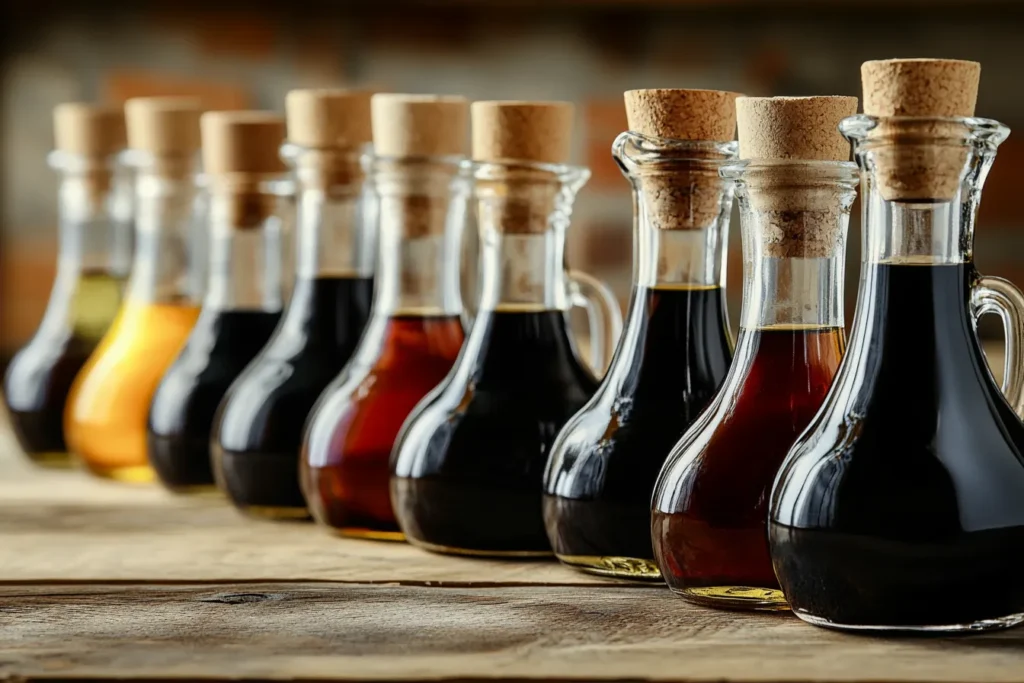
Frequently Asked Questions About Balsamic Balsamic Balsamic
No deep-dive into balsamic balsamic balsamic would be complete without answering the most common questions people ask. Let’s break them down clearly so you feel confident about using balsamic in your own kitchen.
Is balsamic vinegar the same as regular vinegar?
No, balsamic vinegar is very different from plain white or apple cider vinegar. Balsamic is made from grape must, giving it a naturally sweet, syrupy flavor, while white vinegar is far sharper and more acidic. Balsamic’s rich, balanced taste comes from its long aging process and traditional craftsmanship.
How do I know if my balsamic is authentic?
Look for labels that include “Aceto Balsamico Tradizionale di Modena DOP” or “Aceto Balsamico di Modena IGP.” These certifications guarantee you’re buying real balsamic from the protected regions of Italy. The DOP label is the gold standard and means your balsamic was aged and crafted under the strictest traditional rules.
Can balsamic vinegar go bad?
Balsamic vinegar is highly stable because of its acidity and sugar content. As long as you store it in a cool, dark place with the cap tightly closed, it will last for years. Homemade balsamic reductions, however, should be refrigerated and used within 2–3 weeks.
Is balsamic healthy to eat every day?
In moderation, yes! Balsamic is low in calories and rich in antioxidants. According to Healthline’s balsamic vinegar benefits, it may help with digestion, blood sugar regulation, and even heart health. Just don’t go overboard, as balsamic still contains sugar and acid that could upset your stomach if consumed excessively.
How do I use balsamic vinegar on desserts?
This surprises many people — balsamic pairs beautifully with sweets! Drizzle it over vanilla ice cream, macerate fresh berries with a teaspoon of balsamic, or make a balsamic glaze for poached pears. Its tangy sweetness is a wonderful match for dessert flavors.
Should I refrigerate balsamic vinegar?
Regular balsamic vinegar does not need refrigeration. Store it in a cabinet or pantry away from heat and sunlight. However, if you make a balsamic glaze or balsamic-based dressing at home, pop that in the fridge to keep it fresh.
Conclusion
Balsamic balsamic balsamic — a phrase that captures the excitement around this ancient, luxurious, and incredibly useful ingredient. From its 1,000-year-old Italian heritage to its modern role as a superstar in kitchens worldwide, balsamic vinegar deserves a permanent place in your pantry.
Whether you’re making a simple salad dressing, reducing it for a syrupy glaze, or drizzling it over ice cream, balsamic’s complex harmony of sweet and tangy flavors can transform even the simplest dishes into something spectacular. Remember to buy good-quality balsamic, store it carefully, and experiment boldly — because there is so much more this magical vinegar can offer.
If you’re ready to join the balsamic balsamic balsamic trend, there’s no better time to start than today.
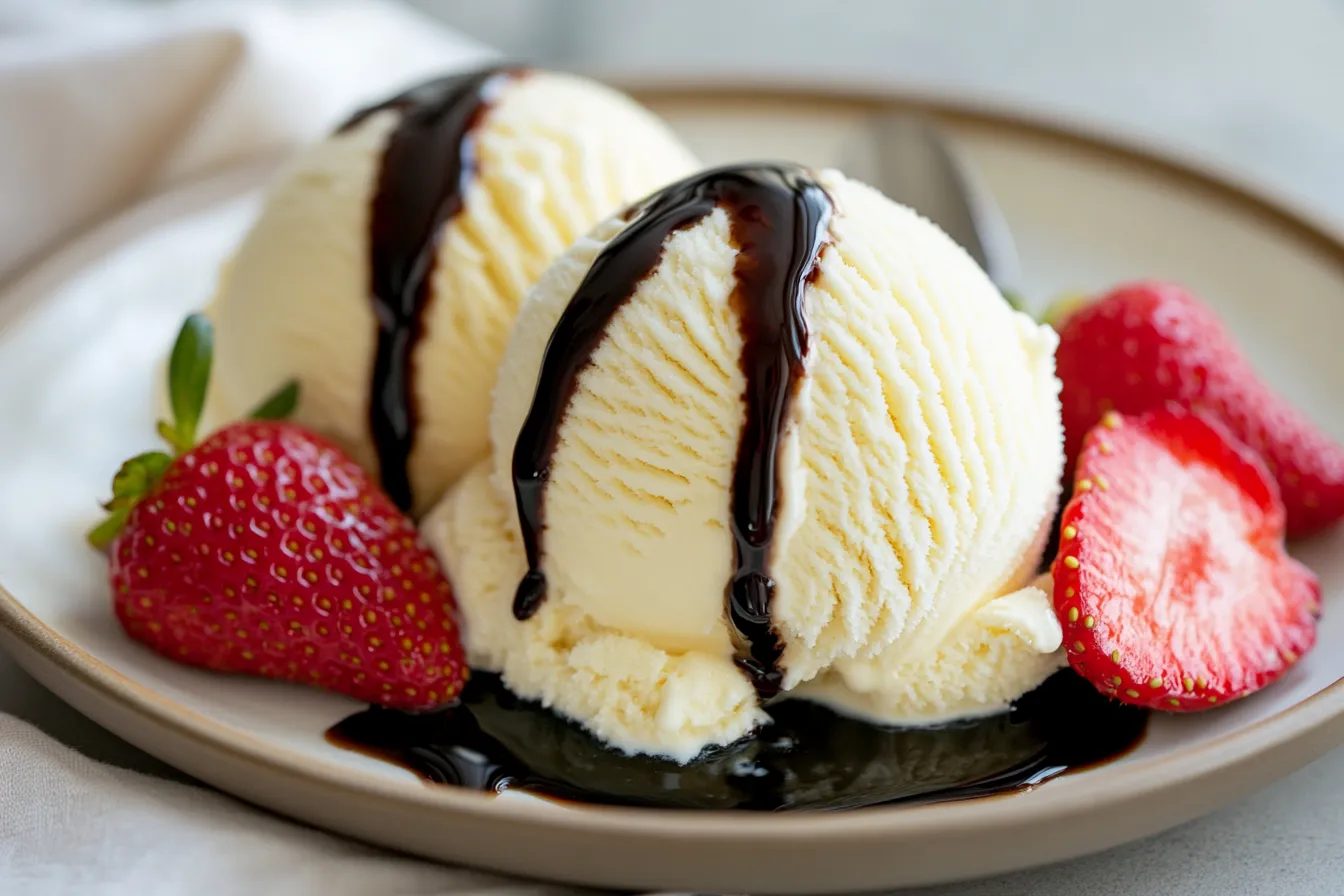
Name: Balsamic Balsamic Balsamic Glaze (Homemade Balsamic Reduction)
Ingredients
Equipment
Method
- Instructions:
- Pour balsamic vinegar into a small saucepan.
- Place over medium heat and bring to a gentle simmer.
- Lower heat to maintain a slow simmer, stirring occasionally.
- Continue simmering until the vinegar reduces by half and thickens into a syrupy consistency, about 15–20 minutes.
- (Optional) Stir in honey or maple syrup, and/or add rosemary for extra flavor.
- Remove from heat and allow to cool.
- Transfer to a clean jar or squeeze bottle, then refrigerate if desired.

